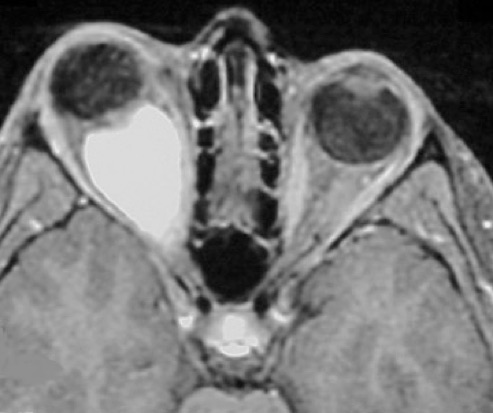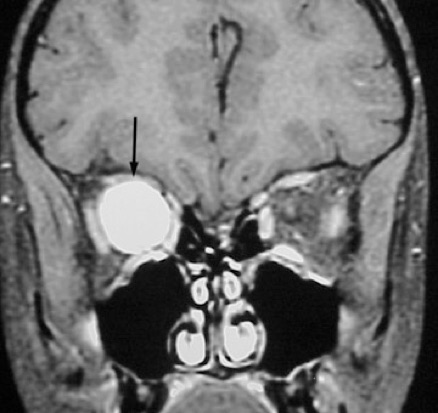

Optic nerve glioma (also known as optic pathway glioma) is the most common primary neoplasm of the optic nerve. Along with reducing visual acuity in the affected eye, the tumor sometimes produces additional symptoms as it grows.
A low-grade form of this neoplasm, benign optic glioma, occurs most often in pediatric patients. Another form, aggressive glioma, is most common in adults; it is frequently fatal, even with treatment.
De Lairessestraat 59 1071 NT Amsterdam 020-679 71 55 omca@me.com www.omca.nl
Optic Nerve Glioma
An optic nerve glioma is a type of brain tumor. There are multiple kinds of brain tumors. They are typically named after the kinds of cells they affect.
According to the Johns Hopkins Brain Tumor Center, gliomas account for approximately one-third of brain tumors (JHU, 2012). They are considered low-grade and do not grow as quickly as other types of brain tumors. They are found in the optic chiasm, where the optic nerves cross, or surround, the optic nerves. They are also referred to as optic glioma or juvenile pilocytic astrocytoma.
Optic nerve glioma is a rare kind of cancer, usually slow-growing and found in children. It is rarely found in individuals over the age of 20. It has also been associated with the genetic disorder neurofibromatosis Type 1, or NF1.
What Are the Symptoms of an Optic Nerve Glioma?
Symptoms of an optic nerve glioma are caused by the tumor pressing against the nerves.
Common symptoms of this kind of tumor include:
• nausea and vomiting
• balance problems
• vision disturbances
• headaches
Other symptoms can include:
• involuntary eye movements
• memory impairment
• daytime sleepiness
• loss of appetite
• growth delays
Hormone problems may also appear because the tumors can occur near the base of the brain where hormones are controlled.
Diagnosing Optic Nerve Glioma
A neurological exam will typically show partial or total loss of vision or changes in the optic nerves. Increased pressure in the brain may be present. Other tests used to help diagnose optic nerve glioma include brain CT scans, brain MRIs, and biopsies.
Treatment of Optic Nerve Gliomas
Treatment for these cancers is best done by a multi-disciplinary treatment team. Specialized therapy may be needed if there is memory loss. Other members of the team can include neurosurgeons and radiation oncologists.
If the tumor can be completely removed by surgery, surgery is often performed. When the tumor is not completely removable, parts of the tumor may be removed to relieve pressure in the skull.
Radiation therapy can be done before surgery to shrink the tumor before removing it or after surgery to kill any remaining cancer cells. In radiation therapy, a machine is used to aim high-energy rays at the site of the tumor.
Chemotherapy uses medications to kill cancer cells. This is particularly useful if the cancer has spread to other parts of the brain. Corticosteroids may be administered to reduce swelling in the skull.
Treatment can kill healthy brain tissue. The dead tissue can look like cancer, so it needs to be monitored closely to ensure there is not a recurrence. After your treatment, follow-up visits with your doctor are necessary to check for any side effects and ensure the cancer has not returned.
After Treatment
After treatment for an optic nerve glioma, long-term side effects may occur. Because these tumors typically grow in children, effects of radiation or chemotherapy may not be apparent for some time. Cognitive difficulties, learning disabilities, and impairments in growth might occur because of the cancer treatment. Talk with your doctor about possible future side effects and what can be done to reduce the damage caused by treatment.
Having cancer as a child can be socially and emotionally stressful. You or your child may benefit from counseling or a support group. Being around peers his or her own age can be a big support.


Amsterdam Eye Hospital
Oogziekenhuis Amsterdam

